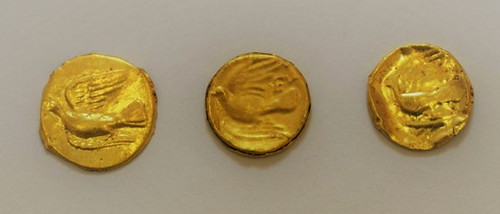
PREV ARTICLE
NEXT ARTICLE
FULL ISSUE
PREV FULL ISSUE
COINS UNEARTHED IN LOST CITY OF TENEA, GREECEArthur Shippee forwarded this New York Times article about a great archaeological find in Greece. Thanks! -Editor First, the archaeologist and her team uncovered a sarcophagus from a village in southern Greece in 1984. Thirty-four years later, an ancient road in the same village led to a Roman mausoleum. Then, in October, a lost city called Tenea was found. Before the discovery, no evidence of the ancient city of Tenea existed; it was found only in historical texts and myths.  Among the other items found was a collection of more than 200 coins that dated from the early Hellenistic years, a historical period that started after the death of Alexander the Great in 323 B.C., and to the Roman Empire. “During the Roman years, Tenea cut coins,” Dr. Korka said, adding, “This shows full independence.” The tombs showed that the area’s population had been a wealthy one. Dr. Korka’s team found a Roman mausoleum outside the city, as well as seven Roman and Hellenistic tombs, all of which had been adorned with ancient urns and gold and silver coins, among other things. To read the complete article, see:
 Wayne Homren, Editor The Numismatic Bibliomania Society is a non-profit organization promoting numismatic literature. See our web site at coinbooks.org. To submit items for publication in The E-Sylum, write to the Editor at this address: whomren@gmail.com To subscribe go to: https://my.binhost.com/lists/listinfo/esylum All Rights Reserved. NBS Home Page Contact the NBS webmaster 
|